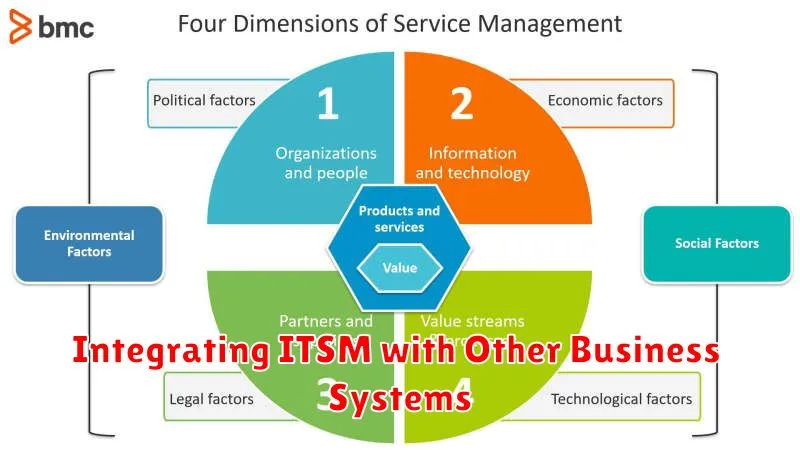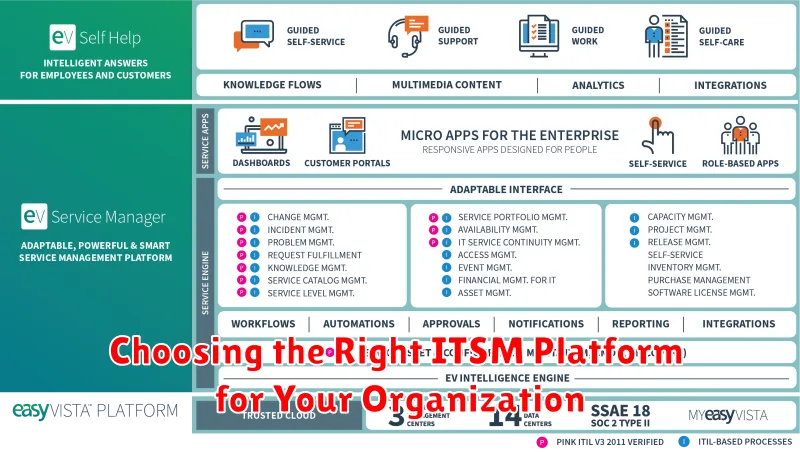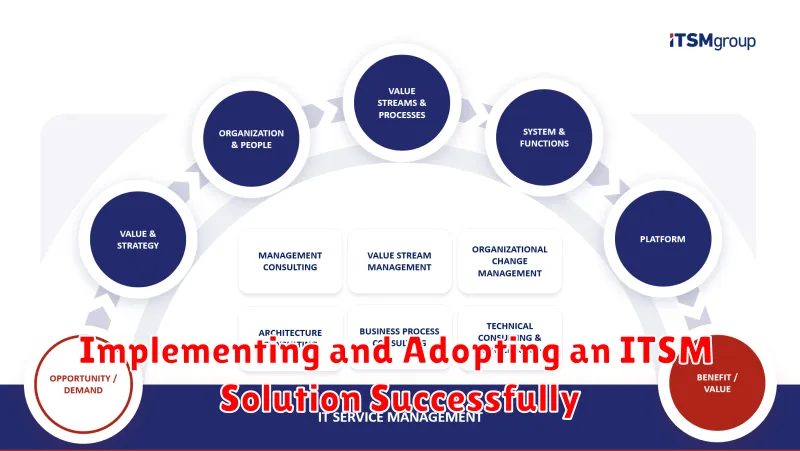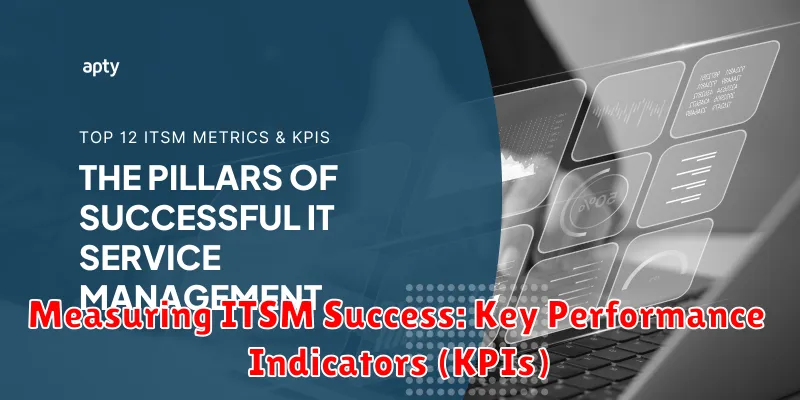In today’s rapidly evolving digital landscape, organizations are increasingly reliant on their IT infrastructure to remain competitive and agile. However, managing a complex IT environment can be a daunting task, fraught with challenges such as downtime, security breaches, and inefficient resource allocation. This is where IT service management (ITSM) platforms come into play. These powerful tools streamline IT operations, enabling businesses to optimize service delivery, enhance efficiency, and drive innovation.
ITSM platforms offer a comprehensive suite of features designed to manage the entire IT service lifecycle, from incident management and problem resolution to change control and asset management. By automating routine tasks, centralizing data, and providing real-time visibility into IT operations, these platforms empower IT teams to work smarter, faster, and more effectively. In this article, we’ll delve deeper into the transformative power of ITSM platforms and explore how they can unlock the true potential of your IT infrastructure.
The Evolving Role of IT Service Management (ITSM)
IT Service Management (ITSM) has evolved significantly over the years, moving from a reactive approach to a proactive and strategic one. Traditionally, ITSM focused on resolving IT issues as they arose, often leading to inefficient processes and frustrated users. However, with the rise of cloud computing, mobile technologies, and the increasing reliance on technology in all aspects of business, ITSM has had to adapt. Modern ITSM solutions are now designed to deliver a seamless and efficient user experience, align with business goals, and drive innovation.
The key drivers behind this evolution include:
- Increased focus on business outcomes: ITSM is no longer just about keeping the lights on; it’s about enabling business success. This means aligning IT services with business needs, measuring the impact of IT on the business, and continuously improving IT services to deliver better business outcomes.
- The rise of cloud computing: Cloud computing has changed the way IT is delivered and consumed. ITSM solutions have had to adapt to manage cloud-based services and integrate with cloud platforms.
- The growth of mobile devices: Mobile devices have become ubiquitous in the workplace, leading to new challenges for ITSM. ITSM solutions need to support mobile users and ensure that services are accessible from any device.
- The need for agility and innovation: Businesses need to be agile and innovative to stay competitive. ITSM solutions need to support rapid deployment of new services, continuous improvement, and the ability to adapt to changing business needs.
In today’s digital world, ITSM is no longer a back-office function. It is a strategic business enabler that plays a critical role in driving business success. By embracing the latest ITSM trends and solutions, organizations can optimize their IT operations, improve user experience, and achieve their business goals.
Key Features and Capabilities of ITSM Platforms
IT service management (ITSM) platforms are crucial for organizations seeking to optimize their IT operations. These platforms provide a comprehensive suite of tools and functionalities designed to streamline service delivery, enhance efficiency, and improve overall IT performance. Here are some key features and capabilities that define modern ITSM platforms:
Incident Management: ITSM platforms enable organizations to effectively track, manage, and resolve IT incidents. From logging and prioritizing incidents to assigning them to the appropriate technicians, these platforms streamline the incident resolution process, reducing downtime and improving user satisfaction.
Problem Management: ITSM platforms go beyond incident resolution by addressing the root causes of recurring issues. They facilitate problem analysis, identification, and resolution, preventing future incidents and improving overall system stability.
Change Management: ITSM platforms support controlled and documented changes to IT infrastructure, minimizing disruptions and ensuring that changes are implemented smoothly. They provide workflows for change requests, impact assessments, and approvals, ensuring that changes are aligned with organizational policies and best practices.
Service Level Management (SLM): ITSM platforms enable organizations to define and monitor service levels for various IT services. SLM features allow organizations to track performance against agreed-upon metrics, ensuring that services meet the needs of users and business stakeholders.
Knowledge Management: ITSM platforms foster a centralized repository of knowledge articles, FAQs, and best practices. This knowledge base empowers IT staff and users to find solutions quickly and efficiently, reducing the need for repeated troubleshooting and enhancing overall productivity.
Asset Management: ITSM platforms track and manage all IT assets, including hardware, software, and licenses. Asset management features provide visibility into asset utilization, facilitate inventory management, and simplify procurement processes.
Reporting and Analytics: Modern ITSM platforms offer robust reporting and analytics capabilities. They provide insights into service performance, incident trends, and resource utilization, allowing organizations to identify areas for improvement and make data-driven decisions.
Integration Capabilities: ITSM platforms are designed to integrate with other IT systems, including monitoring tools, ticketing systems, and business applications. This integration enables organizations to streamline workflows and gain a holistic view of their IT environment.
Automation and Orchestration: ITSM platforms incorporate automation and orchestration features, enabling organizations to automate repetitive tasks, streamline processes, and reduce manual intervention. This automation improves efficiency, reduces errors, and frees up IT staff to focus on higher-value activities.
Cloud-Based Deployment: Many ITSM platforms are now available as cloud-based solutions, offering scalability, flexibility, and accessibility. Cloud deployment simplifies platform management, reduces infrastructure costs, and allows organizations to scale their ITSM solution as their needs evolve.
In conclusion, ITSM platforms are essential tools for modern IT organizations. Their comprehensive features and capabilities empower organizations to optimize IT operations, enhance service delivery, and improve overall business outcomes.
Benefits of Implementing an ITSM Solution
In today’s digital landscape, organizations heavily rely on IT infrastructure to support their operations. To ensure smooth and efficient IT service delivery, implementing an IT Service Management (ITSM) solution is crucial. ITSM platforms offer a comprehensive framework for managing all aspects of IT services, from incident management to service level agreements.
Here are some of the key benefits of implementing an ITSM solution:
Improved Efficiency and Productivity
ITSM solutions streamline IT processes by automating tasks, reducing manual efforts, and providing a centralized platform for managing requests and incidents. This leads to improved efficiency and productivity, allowing IT teams to focus on higher-value activities.
Enhanced Service Quality
By establishing clear service level agreements (SLAs), ITSM solutions ensure consistent and reliable service delivery. With automated incident management and tracking, IT teams can resolve issues faster, minimizing downtime and improving user satisfaction.
Reduced Costs
ITSM solutions can help organizations reduce costs by streamlining operations, automating tasks, and minimizing service disruptions. By proactively identifying and resolving potential issues, these platforms can prevent costly downtime and improve resource utilization.
Improved Visibility and Control
ITSM solutions provide a centralized dashboard that offers real-time visibility into IT operations, enabling organizations to track key performance indicators (KPIs) and identify areas for improvement. This data-driven approach helps organizations make informed decisions and optimize IT services.
Enhanced Collaboration and Communication
ITSM platforms facilitate communication and collaboration between IT teams, users, and stakeholders. This improves transparency and accountability, ensuring everyone is aligned on service delivery expectations and goals.
In conclusion, implementing an ITSM solution offers numerous benefits that can significantly enhance IT operations, improve service quality, and drive business success. By streamlining processes, automating tasks, and providing valuable insights, ITSM platforms empower organizations to optimize their IT infrastructure and deliver exceptional service experiences.
Streamlining Incident Management and Resolution
In the dynamic world of IT, incidents are inevitable. From hardware failures to software glitches, these unexpected disruptions can significantly impact business operations. Effective incident management is crucial to minimize downtime, maintain productivity, and ensure customer satisfaction.
This is where IT service management (ITSM) platforms come into play. These platforms provide a comprehensive framework for managing incidents, automating processes, and accelerating resolution times.
Key Features for Streamlined Incident Management
ITSM platforms offer a range of features designed to streamline incident management and resolution:
- Incident Logging and Tracking: ITSM platforms provide centralized incident logging, allowing teams to capture details such as the type of incident, affected systems, and initial symptoms. This ensures comprehensive documentation and facilitates efficient tracking of incidents throughout their lifecycle.
- Automated Incident Routing: With automated routing, incidents are automatically assigned to the appropriate teams or individuals based on predefined criteria. This ensures incidents reach the right experts promptly, reducing resolution time.
- Knowledge Base Integration: ITSM platforms often integrate with knowledge bases, allowing technicians to access relevant information, troubleshooting guides, and best practices. This accelerates problem-solving and reduces reliance on trial-and-error.
- Service Level Agreements (SLAs): SLAs are pre-defined agreements outlining response and resolution times for different incident types. ITSM platforms enforce SLAs, ensuring teams meet commitments and maintain service levels.
- Reporting and Analytics: ITSM platforms generate comprehensive reports and analytics on incident trends, frequency, and resolution times. These insights provide valuable data for identifying root causes, improving processes, and proactively addressing potential issues.
The Benefits of Streamlined Incident Management
By streamlining incident management, ITSM platforms deliver numerous benefits:
- Reduced Downtime: Automated processes and efficient incident routing minimize the time it takes to identify and resolve issues, reducing downtime and its associated costs.
- Enhanced Productivity: By handling incidents effectively, teams can focus on strategic tasks, improving overall productivity and efficiency.
- Improved Customer Satisfaction: Faster incident resolution and proactive communication lead to improved customer satisfaction, fostering trust and loyalty.
- Better Business Continuity: Effective incident management is essential for ensuring business continuity, allowing organizations to recover quickly from disruptions and minimize the impact on operations.
Conclusion
In conclusion, ITSM platforms are essential tools for streamlining incident management and resolution. By automating processes, centralizing information, and providing valuable insights, these platforms empower IT teams to handle incidents efficiently, minimize downtime, and optimize IT operations.
Automating Service Requests and Workflows
In today’s fast-paced digital world, IT teams are constantly under pressure to deliver efficient and responsive services. Manual processes can be time-consuming and error-prone, leading to delays and frustration. IT service management (ITSM) platforms offer a powerful solution by automating service requests and workflows, streamlining operations and enhancing productivity.
Automating service requests simplifies the process for users. Instead of submitting tickets through email or phone calls, employees can self-service through a user-friendly portal. This allows them to request common services like password resets, software installations, or hardware replacements with ease and speed. The platform automatically routes requests to the appropriate team, ensuring a timely and efficient resolution.
Beyond request automation, ITSM platforms enable the automation of complex workflows. They can define and manage the steps involved in incident management, change management, problem management, and more. This automation ensures consistency, accuracy, and adherence to best practices, reducing errors and improving overall service quality.
Moreover, automation streamlines communication and collaboration. The platform keeps all stakeholders updated on the status of requests and workflows. This transparency minimizes confusion and ensures everyone is on the same page, promoting better communication and collaboration within the IT team and between IT and other departments.
By automating service requests and workflows, ITSM platforms empower IT teams to focus on higher-value tasks, such as innovation and strategic initiatives. This allows them to deliver exceptional service to end-users while optimizing IT operations for efficiency and effectiveness.
Improving IT Asset Management and Tracking
Effective IT asset management is crucial for organizations of all sizes. It involves tracking and managing all IT assets, from hardware and software to licenses and cloud services. By implementing a robust IT asset management system, businesses can gain valuable insights into their IT infrastructure, optimize resource utilization, and reduce costs.
IT service management (ITSM) platforms play a critical role in enhancing IT asset management and tracking. These platforms provide centralized repositories for storing and managing asset data, enabling organizations to:
- Track asset lifecycle: From procurement to retirement, ITSM platforms provide a comprehensive view of each asset’s journey.
- Automate asset discovery: Automating asset discovery simplifies the process of identifying and inventorying all IT assets.
- Improve asset utilization: By analyzing asset usage data, organizations can identify underutilized assets and optimize resource allocation.
- Enhance security: ITSM platforms facilitate vulnerability management and patch updates, reducing the risk of security breaches.
By leveraging the power of ITSM platforms, organizations can streamline their IT asset management processes, gain better control over their IT infrastructure, and ultimately improve operational efficiency and reduce costs.
Enhancing Knowledge Management and Self-Service
IT Service Management (ITSM) platforms play a crucial role in streamlining IT operations and improving service delivery. One of the key benefits of these platforms is their ability to enhance knowledge management and self-service, empowering users to resolve issues independently and reducing the burden on IT support teams.
ITSM platforms provide a central repository for storing and organizing IT-related knowledge, such as troubleshooting guides, FAQs, and best practices. This centralized knowledge base allows users to quickly access information they need to solve common problems, reducing the need for direct support requests.
Moreover, ITSM platforms empower users with self-service capabilities through online portals or mobile applications. These portals offer a variety of features, such as password resets, software updates, and incident reporting, enabling users to manage common tasks without needing to contact IT support. This not only frees up IT staff for more complex tasks but also improves user satisfaction by providing them with greater autonomy and control.
By promoting self-service and providing readily accessible knowledge, ITSM platforms foster a culture of self-reliance within the organization, reducing IT support workload and improving overall efficiency. This allows IT teams to focus on more strategic initiatives, ultimately leading to better service quality and improved business outcomes.
Integrating ITSM with Other Business Systems

In today’s interconnected business world, a siloed IT service management (ITSM) platform is no longer sufficient. To truly optimize IT operations, it’s crucial to integrate your ITSM system with other business systems. This seamless flow of information allows for greater efficiency, enhanced collaboration, and improved decision-making across departments.
Here are some key benefits of integrating your ITSM platform with other systems:
- Improved Visibility and Reporting: By combining data from various sources, you gain a holistic view of your IT operations. This enables you to create insightful reports that reveal trends, identify bottlenecks, and measure the effectiveness of your IT services.
- Streamlined Workflows: Automating tasks and information sharing across systems simplifies complex workflows. For instance, integrating your ITSM with your CRM can automate the creation of support tickets when a customer issue is logged, ensuring a seamless customer experience.
- Enhanced Collaboration: Breaking down departmental barriers allows for greater collaboration between IT and other departments. With integrated systems, IT teams can access relevant information from other teams, such as sales, marketing, or finance, leading to better problem-solving and faster issue resolution.
- Reduced Costs and Increased Efficiency: By automating tasks and eliminating manual processes, integration can significantly reduce operational costs and improve efficiency. For example, integrating with your HR system can automate the provisioning of IT resources for new employees, saving time and effort.
When choosing integration solutions, consider factors like:
- Scalability: Ensure the solution can handle your growing data volumes and user base.
- Security: Prioritize solutions that offer robust security features to protect sensitive data.
- Support: Choose a solution with reliable support and documentation to ensure smooth integration and ongoing maintenance.
Integrating your ITSM platform with other business systems is essential for creating a truly efficient and collaborative IT environment. By leveraging the power of integration, you can optimize your IT operations, improve service quality, and unlock new possibilities for business growth.
Choosing the Right ITSM Platform for Your Organization

In today’s digital world, organizations rely heavily on IT systems to operate efficiently. This dependence necessitates a robust IT service management (ITSM) platform to manage and optimize IT operations. Choosing the right ITSM platform is crucial for organizations of all sizes, ensuring smooth operations, improved service quality, and cost savings.
When selecting an ITSM platform, several key factors should be considered:
1. Business Needs and Objectives
Start by defining your organization’s specific IT service management needs and objectives. Consider the following questions:
- What types of IT services do you need to manage?
- What are your key performance indicators (KPIs) for IT service delivery?
- What are your budget constraints?
- What level of automation and integration is required?
2. Scalability and Flexibility
The platform should be scalable to accommodate future growth and evolving business needs. Consider the number of users, service requests, and incidents your organization anticipates managing. Flexibility is also essential, allowing customization to suit your unique workflows and processes.
3. Ease of Use and User Interface
An intuitive user interface and easy-to-navigate system are crucial for user adoption and efficiency. Look for a platform that offers clear and concise dashboards, reporting tools, and automated workflows.
4. Integration Capabilities
The ITSM platform should seamlessly integrate with existing IT systems and applications, such as help desk software, asset management tools, and monitoring systems. This integration ensures data consistency and reduces manual data entry.
5. Security and Compliance
Security and compliance are paramount, especially for organizations handling sensitive data. Choose a platform that meets industry standards and offers robust security features, such as data encryption, access controls, and auditing capabilities.
6. Support and Training
Adequate support and training are essential for successful implementation and ongoing operation. Look for a vendor that offers comprehensive documentation, online resources, and responsive customer support.
7. Vendor Reputation and Experience
Research the vendor’s reputation, experience in the industry, and track record of successful implementations. Consider factors such as customer satisfaction ratings and the vendor’s commitment to innovation and ongoing product development.
By carefully evaluating these factors, organizations can select an ITSM platform that aligns with their specific needs and objectives. This investment will empower them to optimize IT operations, improve service quality, and achieve greater efficiency and cost savings.
Implementing and Adopting an ITSM Solution Successfully

Adopting an IT Service Management (ITSM) solution can be a game-changer for your IT operations, but successful implementation requires careful planning and execution. This article will guide you through the key steps to ensure a smooth and effective transition, empowering you to harness the full potential of your ITSM platform.
1. Define Clear Objectives:
Begin by articulating your specific goals for implementing an ITSM solution. What challenges are you aiming to address? What improvements are you seeking? Clearly define your objectives, whether it’s streamlining incident management, enhancing service desk efficiency, or improving communication and collaboration.
2. Select the Right ITSM Platform:
Choosing the right ITSM platform is crucial. Consider factors such as your organization’s size, IT infrastructure, budget, and specific needs. Evaluate different vendors and their offerings, paying attention to features, scalability, integration capabilities, and user-friendliness.
3. Implement a Phased Approach:
Don’t try to implement everything at once. Start with a pilot project involving a specific department or function. This allows for gradual rollout, testing, and refinement before expanding to the entire organization. A phased approach minimizes disruption and allows for continuous improvement.
4. Foster User Adoption:
Success hinges on user buy-in. Provide comprehensive training programs, clear documentation, and ongoing support. Encourage feedback and make adjustments based on user experiences. Creating a positive user experience is essential for long-term adoption.
5. Integrate with Existing Systems:
Ensure smooth integration with your existing IT systems and applications. This will prevent data silos and streamline workflow. Prioritize integration with critical tools like your help desk, asset management system, and ticketing platform.
6. Continuous Improvement:
ITSM is an ongoing process. Regularly review your implementation and identify areas for improvement. Track key metrics, gather feedback, and make adjustments as needed. Continuously adapt your ITSM solution to meet evolving business needs.
Measuring ITSM Success: Key Performance Indicators (KPIs)

Implementing an IT Service Management (ITSM) platform is a significant step towards optimizing IT operations. But how can you truly assess the effectiveness of your ITSM implementation? The answer lies in tracking and analyzing key performance indicators (KPIs). KPIs are quantifiable metrics that measure the success of your ITSM strategy.
By closely monitoring KPIs, you gain valuable insights into the performance of your IT services and identify areas for improvement. Here are some crucial KPIs to consider:
Service Level Agreement (SLA) Compliance
SLAs outline the agreed-upon service levels between your IT department and stakeholders. Tracking SLA compliance measures how effectively your IT team meets these commitments. This KPI reflects the overall quality and reliability of your services.
Mean Time to Resolution (MTTR)
MTTR measures the average time taken to resolve incidents. A lower MTTR indicates faster response times and efficient problem-solving, contributing to improved service availability and user satisfaction.
Incident Resolution Rate
This KPI tracks the percentage of incidents resolved within a specified timeframe. A high resolution rate signifies your IT team’s capability to address issues promptly and effectively.
Customer Satisfaction (CSAT)
Measuring customer satisfaction is paramount in any IT service management strategy. Conducting regular surveys or feedback mechanisms allows you to understand user experiences and identify areas requiring attention.
Cost Savings
ITSM aims to optimize resource allocation and improve efficiency. Tracking cost savings achieved through ITSM implementation showcases the financial benefits of your strategy.
Conclusion
By tracking and analyzing KPIs, you gain a comprehensive understanding of your ITSM platform’s effectiveness and identify areas for optimization. Remember, KPIs are not merely numbers; they represent the success and impact of your ITSM initiatives. Regularly monitoring and improving your KPIs ensures a robust and efficient IT service management ecosystem.
The Future of ITSM: Trends and Innovations
The world of technology is constantly evolving, and with it, the way we manage IT services. IT Service Management (ITSM) has transitioned from a reactive approach to a proactive, strategic function. This shift is driven by a convergence of technological advancements and evolving business needs. The future of ITSM is marked by a focus on automation, AI, cloud-based solutions, and a stronger emphasis on user experience.
Artificial Intelligence (AI) is poised to revolutionize ITSM by automating repetitive tasks and predicting potential problems. AI-powered tools can analyze vast amounts of data to identify patterns, predict service outages, and optimize resource allocation. This allows IT teams to focus on more strategic tasks, driving innovation and enhancing service quality.
Cloud-based ITSM platforms are becoming increasingly popular due to their scalability, flexibility, and cost-effectiveness. These platforms offer a centralized repository for managing incidents, requests, and knowledge base articles, enabling seamless collaboration and improved service visibility.
User experience (UX) is a paramount consideration in the future of ITSM. Platforms are evolving to provide intuitive and user-friendly interfaces, empowering both IT professionals and end-users to access information and manage services with ease. This focus on UX fosters a culture of self-service, reducing the burden on IT support teams and improving overall user satisfaction.
The future of ITSM holds exciting possibilities. By embracing these trends and innovations, organizations can streamline their IT operations, enhance service quality, and drive business value. The key lies in adopting a forward-thinking approach, embracing technological advancements, and prioritizing the needs of both IT teams and end-users.

